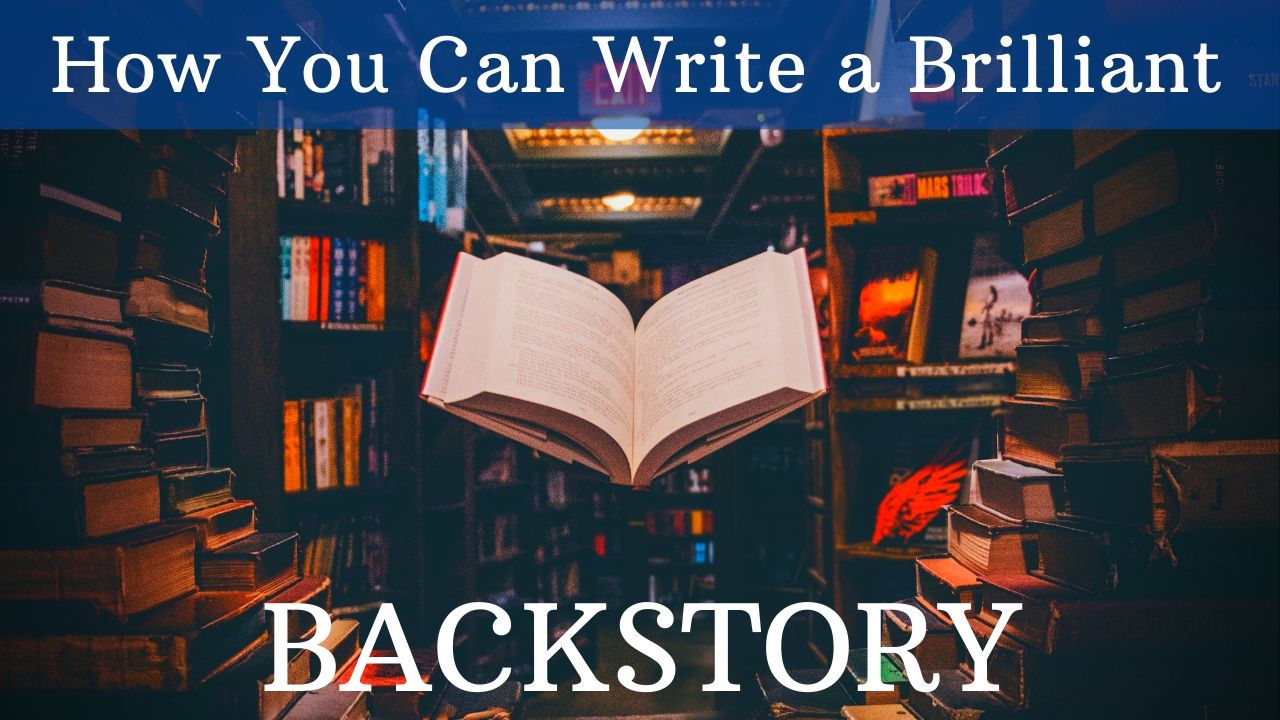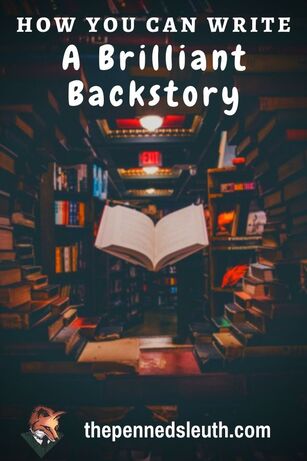Latest Writing Video! |
|
Backstory is one of the greatest tools you can use in your writing. You can use it to give characters reason for their actions, a reason to be in your novel. It can be used to foreshadow events, develop characters and intrigue the reader. Yet, there are common mistakes writers make. Here is how you can write your perfect backstory! What is a Backstory?Everything which is written before the first page is a backstory. It is the story the reader doesn’t get to read. Instead, the reader hears about it through snippets of dialogue or through narration that calls back to it. Of course, if you are writing a series of novels, the events of your first novel become a backstory to the second novel and so on. Backstories are being used by authors today to develop their characters, describing how they grew up to explain how they came to be the person they are in the novel. Of course, this is one of the major mistakes that authors make when writing a backstory. Backstory Needs to be RelevantAnyone can write a simple backstory of how a character lived in their younger years. Yet, this is a backstory that commonly serves as padding as it will most likely not contain any relevant information to the story. It is the relevancy of a backstory which makes it interesting to the reader and necessary for the plot. The Typical BackstoryThe typical backstory is a story that describes in a page or two how a character crossed paths with the main characters in the story. Sometimes, it is simply fate, sometimes it is calculated. Let us take a look at one scenario: Two convicts become friends. One shares their story with the other, describing the crime they committed and how they got caught, eventually placing them in the same room as their friend. A typical backstory is easy to write as it is only a step above the padding that is often written. The story is relevant to the character and the setting, making it an interesting and necessary backstory. A great way to write the typical backstory is through dialogue. Have the character explain why they are where they are. If you want to make this backstory more interesting, perhaps the character is lying, but that is something for you to think about. A Purpose BackstoryYour characters have a role to play in your novel. Your character can be a close friend, other-half or colleague to another character. Unlike the typical backstory, this isn’t a backstory that describes how they ended up where they are, it is why they ended up where they are. Take this scenario for example: Character B used to have a crush on their friend, Character A, but the two drifted apart once school ended. Character A and B reunite and those feeling Character B felt are reignited. It is for this reason Character B is too afraid to court Character A, as it may cause another separation. A scenario common with the romance genre, but you can clearly see how the backstory is used. It defines a character’s purpose in the story, what their desire is. It is what makes their role more important than a character only just introduced in your novel. Once more, the backstory is a tool and in this case, it was used to describe purpose. The Reflective BackstoryWe have discussed the two most common backstories, but not let’s go over the most complex and interesting backstory you can write; a reflective backstory. A reflective backstory is used to develop a character, grow them into a wiser or stronger character in your novel. Usually, these backstories contain a lesson, a lesson which is clear by the end of the story to the character and reader Take this scenario for example: Character A is faced with a challenge that they are unable to overcome. Despondent, the character recalls a past experience where Character B gives them advice. Character B’s advice is ignored in the past, leading Character A to repeat the same mistake. It is now, when Character A is wiser, that they finally listen and overcome the challenge. The challenge can be anything from physical to emotional, but as long as they have a memory containing the solution, the character can reflect on what they are doing wrong and learn how to do something right. Length of BackstoryDepending on their importance, a backstory can vary in length. Interesting and important backstories are often longer than less important backstories. A reflective backstory can be an entire chapter or more and the same could be done for a typical backstory. These backstories will be more detailed but are often more impactful as a result. However, you as a writer want to keep the reader’s attention. Once you have introduced a character and time to the reader, they will want to follow it as much as possible. If your story requires a lengthy backstory, be sure to make it investing and return the spotlight to the present. The Backstory GoalWhen writing a backstory, be sure to keep the reason for the backstory in mind. It is easy to get carried away when you start writing something you enjoy. You include more details here and there, but if your backstory starts to drag-on or fail to include a clear reason why you are writing it, it will only fall flat. It is important to remember that you are using the backstory to give your reader and sometimes your characters more insight on how another character behaves or their exact role in the novel. Show them the moment that character decided on their path, the path that leads them to play the role in your novel. Conclusion Reaching the end of this article, I think on the backstories I have written in the past. Personally, I write for the present whenever I can. I develop my characters in the present and feel if a backstory is necessary, then it would have been better if I had started the novel with it. Of course, that is not to say I don’t make use of it. Only, I certainly don’t write lengthy backstories. It is with that in mind that I can only advise you to write backstories as much as you wish to. Perhaps your style better suits lengthy backstories or you enjoy writing them, in which case, you can use this writing tool as often as you wish. Yet, don’t feel pressured to use a lengthy backstory either, if any backstory at all. It is only one of the tools you can use to your advantage and you can still write a brilliant novel without any backstory. On that note, Good day, goodnight and happy writing! Thank YouDear Writer, As a big thank you for reading this article I would like to offer you something for FREE! A writing course on how to improve your main character! Click here to check out your course. To receive more content, bonuses and some big discounts on future courses, join the writer’s group here. Thank you for reading! Kind regards Matthew Dewey, Writer Pin for Later!
0 Comments
Leave a Reply. |







